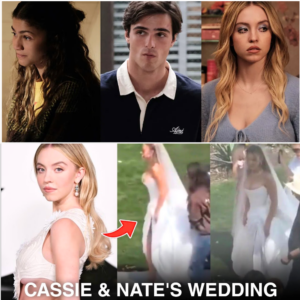The sprawling campus of Meta’s headquarters in Menlo Park, California, pulsed with electric anticipation on September 17, 2025, as developers, tech enthusiasts, and industry insiders converged for the annual Meta Connect conference. Under a vast dome of LED lights mimicking a twilight sky, Mark Zuckerberg took the stage—not in his trademark hoodie, but in a sleek black turtleneck that hinted at the polished ambition of the evening. At 41, the Meta CEO has long been the oracle of connectivity, but this year, his keynote promised more than incremental updates; it heralded a paradigm shift in how we interface with the digital world. Center stage: the Meta Ray-Ban Display glasses, a fusion of Italian craftsmanship and Silicon Valley sorcery, priced at $799 and poised to redefine wearable technology. With micro-displays etched into the lens, high-fidelity cameras, immersive audio, and a neural wristband for gesture control, these glasses weren’t just an accessory—they were Zuckerberg’s manifesto for a future where AI whispers directly into our field of vision.
Zuckerberg’s entrance set the tone. Striding onstage with a pair of the prototype glasses perched on his nose, he fired up a thumping bass track via voice command, the sound crystal-clear through open-ear speakers. “Imagine a world where your glasses aren’t just seeing the world with you—they’re enhancing it,” he declared, his voice steady amid the roar of applause. The Ray-Ban Display, developed in tandem with EssilorLuxottica—the luxury eyewear conglomerate behind Ray-Ban—builds on the success of the original Ray-Ban Meta glasses, which have sold over two million units since 2023. Those early models were trailblazers: sleek frames hiding 12-megapixel cameras for hands-free photos and videos, Meta AI for real-time queries, and Bluetooth audio for calls and tunes. But the Display version elevates the game, introducing a full-color, high-resolution micro-LED screen projected onto the right lens—a heads-up display (HUD) that’s invisible until summoned, then vanishes like a digital mirage.
The star of the show, however, was the Meta Neural Band, a slim, fabric-wrapped wristband that reads electromyography (EMG) signals from subtle muscle twitches. Priced at $199 as an optional add-on, it translates flicks, pinches, and twists into commands, freeing users from voice or touch. Zuckerberg demonstrated with flair: a gentle wrist rotation cranked up the volume on his playlist, while a finger-tap “wrote” a quick reply to a mock text—an emoji-flecked thumbs-up zipping off to a simulated friend. “It’s like magic,” he grinned, flexing his forearm to scroll through notifications floating ethereally in his lens. The glasses’ battery clocks in at six hours of mixed use, extendable with a charging case that doubles as a portable power bank. Cameras now capture 3K Ultra HD video, and the AI integration—powered by Meta’s Llama 3.1 model—promises contextual smarts: overlaying navigation arrows on streets, translating foreign signs in real-time, or captioning conversations for the hearing impaired.
Yet, for all its wizardry, the unveiling was a masterclass in live-demo peril. The evening’s first hiccup came during a segment with content creator Jack Mancuso, a chef demoing a Korean steak sauce recipe. Through his Ray-Ban Meta Gen 2 glasses (a $379 refresh of the originals with doubled battery life and improved mics), Mancuso queried Meta AI: “What do I do first?” Silence. He repeated, frustration mounting, as the AI skipped steps erratically. “I think the Wi-Fi’s messed up,” Mancuso quipped, tossing the ball back to Zuckerberg with a sheepish grin. The CEO laughed it off—”We’ve practiced this a hundred times”—but the glitch rippled through the audience, a reminder that even billion-dollar bets on the future can stutter.
Worse was yet to come. Donning the Ray-Ban Display and Neural Band, Zuckerberg attempted a WhatsApp video call to Meta’s CTO, Andrew “Boz” Bosworth. The incoming ringtone blared insistently on his lens display, a shimmering notification bubble refusing to connect. He pinched at the air, twisted his wrist—nothing. “I don’t know what to tell you guys,” Zuckerberg admitted, the band slipping futilely as the call looped. Bosworth eventually patched in via a backup feed, but the moment hung awkward, the crowd’s murmurs amplifying the irony. Post-event, Bosworth clarified on Instagram: no Wi-Fi woes, but a resource overload—when Mancuso activated Live AI, it inadvertently fired up every pair of Ray-Ban glasses in the building, taxing servers like a digital stampede. “Live demos are live,” Zuckerberg later shrugged in a fireside chat, his candor disarming critics who might have pounced.
These stumbles, though, couldn’t eclipse the broader vision. Meta Connect 2025 wasn’t just about glasses; it was Zuckerberg’s rebuttal to the metaverse’s early fumbles. Remember 2021, when “metaverse” became his North Star, funneling $36 billion into Reality Labs that year alone? Horizon Worlds, Meta’s virtual sandbox, launched to yawns—blocky avatars in barren realms, user counts peaking at a measly 200,000 monthly actives. Investors balked, shares dipped, and the narrative soured: Was Zuck chasing sci-fi ghosts while TikTok and Snapchat devoured social attention? Fast-forward to 2025, and the pivot is palpable. With AI surging—Llama models open-sourced to thunderous acclaim—Meta’s $50 billion Reality Labs war chest (up 20% from 2024) now targets “lightweight AR” as the true next frontier. “Quest headsets are amazing for immersion,” Zuckerberg told the crowd, unveiling Horizon TV—a VR streaming hub partnering with Disney+ for immersive Star Wars experiences. “But glasses? They’re the bridge to everyday superpowers.”
The Ray-Ban Display embodies this ethos. At 50 grams—lighter than a smartphone yet packing more compute—the frames boast IP54 water resistance for workouts or rain. Prescription lenses? Standard. Styles range from classic Wayfarers to aviators, blending into wardrobes like any Ray-Ban. Early hands-on reviews from outlets like CNBC and Business Insider rave about the HUD’s subtlety: a 0.5-inch display rendering crisp text and icons at 1,000 nits brightness, readable in sunlight without glare. “It’s like having a second screen in your eye,” one tester noted, navigating a virtual map overlay during a mock jog. The Neural Band, with its 18-hour battery and machine-learning calibration, learns your gestures over time—initial setup via app takes minutes, then it’s intuitive as muscle memory. Meta AI shines here: spotting a landmark and piping facts (“That’s the Golden Gate—built 1937, longest suspension span”), or analyzing a menu photo for allergen alerts.
Availability kicked off September 30 in the U.S., rolling into Best Buy, LensCrafters, and Ray-Ban boutiques, with Verizon bundles and pop-up demos in New York and LA. International expansion hits Europe and Asia in Q1 2026. At $799, it’s a premium play—triple the $299 originals—but Zuckerberg positions it as an investment: “This is the iPhone moment for AR.” Analysts agree; IDC forecasts 14.3 million AR/VR shipments in 2025, a 39% surge, with Meta claiming 40% market share via Ray-Ban alone. Gene Munster of Deepwater Asset Management called it “a strong value proposition,” praising the EMG tech’s leap over voice-only rivals. Ross Gerber, a vocal Meta bull, dubbed the ecosystem “game-changing,” eyeing billions in untapped revenue as AI subscriptions layer on.
Of course, shadows linger. Privacy hawks eye the ever-present cameras—opt-in recording with LED indicators mitigates some fears, but data flowing to Meta’s servers raises eyebrows post-Cambridge Analytica. Battery life, while improved, still demands midday charges for heavy users. And competition looms: Apple’s rumored “Apple Glass” whispers of 2027 launches with seamless iOS integration; Google’s Project Astra glasses tease similar HUDs; Snap’s Spectacles 5 eyes creator tools. Yet, Meta’s edge is incumbency—two million Ray-Bans in the wild mean battle-tested AI, refined UX, and a flywheel of user data (anonymized, they insist).
Zuckerberg’s personal stake adds poignancy. A father of three, he demoed family-friendly feats: the glasses transcribing a bedtime story for subtitles, or AR games overlaying virtual dinosaurs on the living room rug. “This isn’t about replacing your phone,” he said, echoing Steve Jobs’ iPad reveal. “It’s about augmenting your humanity.” The keynote closed with a sunset jog alongside DJ Diplo, both in Oakley Meta Vanguard glasses—a $499 sport variant with rugged titanium frames and sweat-proof seals for athletes. They pounded pavement, AI narrating pace stats in-ear, a poetic cap to a day of bold bets.
As confetti fell and developers dispersed to hackathon tents, Meta Connect 2025 left an indelible mark. The Ray-Ban Display isn’t flawless—glitches and all—but it’s a clarion call. In Zuckerberg’s words, uttered amid the wristband’s final failed ping: “The future’s coming, whether the demo works or not.” For wearables, that future gleams in miniature screens and neural nudges, promising a world where technology doesn’t intrude—it illuminates. Whether it scales to billions remains the trillion-dollar question, but one thing’s clear: Meta’s not backing down. The glasses are on, and the race is just beginning.



